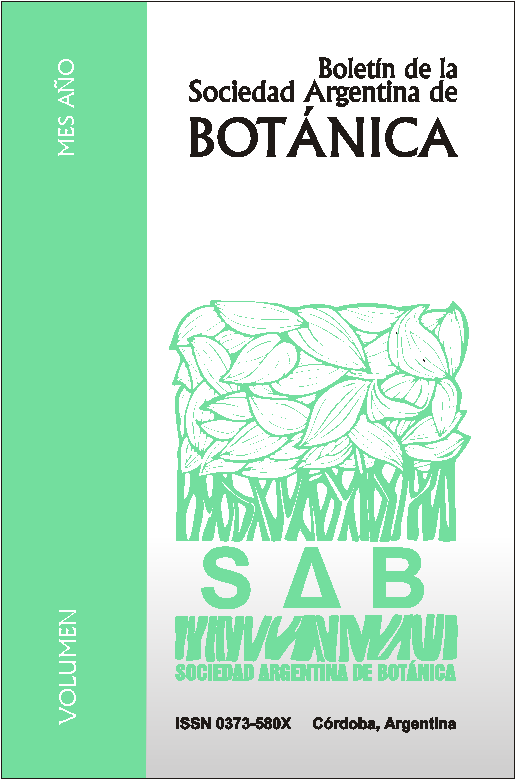Basis for conservation seeds Calophyllum brasiliense (Calophyllaceae).
DOI:
https://doi.org/10.31055/1851.2372.v50.n1.11021Keywords:
Calophyllum brasiliense, seeds, storage, conservation, physiological qualityAbstract
Basis for conservation seeds Calophyllum brasiliense (Calophyllaceae). Calophyllum brasiliense Cambess (Calophyllaceae) is a tree species distributed in Argentina in the edges of matting and hygrophilous forests of the Paraná River. Those of the riverbank have been strongly fragmented due to the increment of the flood levels caused by the Yacyreta dam, thus, this populations are at risk of being locally extinguished as a consequence of their drastic size reduction. Fragmentation can affect plant species reducing the amount or the quality of seeds produced or both. The ecological, medicinal, economic and social value of the species and the status of their populations have generated interest in its preservation. One of the strategies implemented was the storage of its seeds, which are recalcitrant. The aims of this study were to evaluate three populations with respect to their potentiality to produce seeds capable of generating individuals, and evaluate the physiological quality regarding the harvest time and the length of the storage period under four methods. The Puerto Valle population produced seeds of good quality which conserved the viability for thirty-one weeks when they were stored with endocarp, in glass bottles.Downloads
Issue
Section
License
Provides immediate and free OPEN ACCESS to its content under the principle of making research freely available to the public, which fosters a greater exchange of global knowledge, allowing authors to maintain their copyright without restrictions.
Material published in Bol. Soc. Argent. Bot. is distributed under a Creative Commons Attribution-NonCommercial-ShareAlike 4.0 International license.





